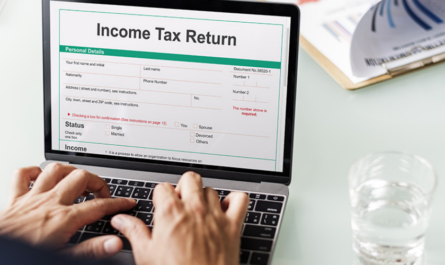You can choose from a number of different options while shopping for auto insurance. Even though it’s common practice to work with an agent or contact an insurer by phone, purchasing auto insurance online may actually be the most convenient option.
When you apply for auto insurance, you can receive a quote almost instantly after providing some basic information about yourself and your vehicle. You may also benefit from the fact that the procedures for purchasing insurance for both new and used vehicles are rather comparable.
However, there are a few points to consider before proceeding with the online alternative. To get you ready, here are fifteen things you should know about purchasing auto insurance online.
1. Investigate the businesses
To find an insurance company that fits your needs and has a good reputation, it’s a good idea to do some research on the company before you start getting estimates. In addition to providing adequate coverage, you should check the company’s performance in areas such as customer service, claim processing, and other services.
Find out whether they also provide any useful tools for their clients. For instance, if you ever need it, you can speed up the process by submitting your claim through a smartphone app. Prior to proceeding, make sure you have compared the available possibilities from several companies.
2. Compare price estimates
Shopping around for quotes is a tried-and-true method for saving money on auto insurance. In order to compare prices and levels of coverage, it is a good idea to get estimates from multiple companies.
Submitting your information to each insurance company individually is usually the best course of action, even if a website offers rates from multiple insurers at once. That way, you can verify that you’re giving each insurer all the information they need.
3. Take a look at the coverage data
There is some variation in the levels of coverage included in auto insurance quotations. The monthly price can vary between carriers because some may have varying deductibles. Policies can also differ in terms of specifics.
Comprehensive, collision, and liability insurance are the three most common types. There are advantages, disadvantages, and price points associated with each of those. In the end, it’s not fair to compare policies if they aren’t identical. Having said that, it’s in your best interest to go over the coverage details thoroughly to identify any similarities and differences.
4. For big savings, buy in bulk
It may be more cost-effective to purchase multiple policies from the same insurance provider if you require additional coverage for things like your home or renters’ insurance. Several organizations offer multi-policy discounts that could reduce the total cost by 5-25%.
You can still save money by insuring more than one car with the same company, even if you’re not interested in switching homeowners’ or renters’ policies. You can save money on your auto insurance premiums by taking advantage of what is known as a multi-car discount.
5. Tell me about your security measures
When careful to include all of your car’s safety features that could result in discounts when you submit your information to insurers for quotations. Daytime running lights and anti-theft gadgets are two examples of features that could help you save money.
6. Garage Parking
Some insurance companies offer discounts to policyholders who park their vehicles in garages rather than on driveways or streets. Having insurance covers your vehicle, making it more secure and less susceptible to theft. Consequently, the insurer sees you in a more favorable light, reducing your risk.
You could save even more money if you installed a security system in your garage. Informing them about your garage’s security system connection is a good idea, even though it’s not always the case. It could help you get a better deal.
7. To start, raise your credit score
Your credit score may affect your insurance premiums; the exact effect may vary by state. When insurers consider this issue, it is commonly believed that individuals with lower credit scores pose higher risks. Insurance premiums could go up if your credit isn’t good.
Improving your credit score is something you should do when time permits; nevertheless, if you require insurance right away, it may not be feasible. If not, purchase insurance right away and compare prices with multiple providers when your credit score improves.
8. Be careful while on the road
When determining your auto insurance premium, your driving record is a major consideration. Saving money is usually possible if you drive cautiously and stay out of moving offenses and accidents where you are at fault.
Drive carefully if you want to save money on your insurance by going with an insurer that provides a device to track your driving habits. Steer clear of erratic, rapid acceleration and deceleration. If you don’t, you might not be able to get any savings or even see your rates go up in the future.
9. Select the appropriate deduction
Raising the deductible is an old-fashioned strategy for lowering car insurance premiums. If you can’t afford the out-of-pocket repairs for your car after an accident, you might not be able to get it fixed.
Instead, think about your present financial situation and emergency savings while deciding on a first deductible. Then, get in touch with your insurance company to change your rates to reflect a greater deductible once you’ve saved up a larger emergency fund.
10. Gap coverage is not a given
The purpose of gap coverage is to pay for the difference between your car’s current value and the amount you owe on your auto loan. This way, you can repay the loan in full in the event that an accident results in the total loss of your vehicle, regardless of its market value.
Gap coverage is a good choice, but you should only think about it if your auto loan is more than the car’s worth. Avoid purchasing gap coverage if it fails to deliver the promised benefits.
11. Eliminate superfluous coverage
Additional benefits, such as rental car insurance and roadside assistance, are available with some plans. However, if you don’t use them, you can save money by removing them from your coverage. Furthermore, if your circumstances change, you can usually reinstate them. They are easily programmable to turn on and off, which means you may save money in the long run.
12. Beware of missing out on mileage discounts
Your car insurance estimate may be based on the average annual mileage, which is close to 12,000 miles. There may be a low-mileage discount available for your auto insurance if your yearly mileage is less than that.
If you don’t have a lot of driving, another option is to look into pay-as-you-go insurance. These often have a billing period of around a month and are based on the miles you drive within that time. This may cause some volatility in your monthly costs, but the savings you may achieve will more than make up for it.
13. Enroll in a recognized defensive driving program
Defensive driving lessons aren’t a guarantee for a lower premium, but some insurance companies reward responsible drivers with savings. You can lessen your vulnerability to road accidents by enrolling in these seminars and learning how to recognize and avoid potential hazards.
If you want to save money on car insurance, taking a defensive driving course is usually a must. If you haven’t already, check with your insurance company to see if they offer this discount and, if so, which community initiatives they accept.
Defensive driving lessons typically do cost money. Consider the class fee in relation to the discount amount. You should also inquire as to whether the discount is time-limited following course completion. The requirement to re-pay and re-pass the class every few years to maintain eligibility could partially negate potential savings.
14. As a rideshare driver, invest in the proper add-on
As a general rule, most auto insurance plans do not cover drivers who use rideshares. Rideshare drivers will have to pay extra insurance for such actions. If this isn’t the case, the insurance may not cover certain damages that occur during the car’s rideshare use. This could result in a significant out-of-pocket expense.
15. Want more discounts? Just Ask!
Lots of insurance companies have hidden savings they don’t want you to know about. For nice student discount may be available for your policy, for instance, if you or another covered driver are students with a suitable GPA, which is usually around 3.0 or above. Retirees, educators, emergency personnel, active-duty military, veterans, and others often have options as well.
Seek further information from the insurer or peruse its website if you are unable to locate a comprehensive list of potential savings on its website. Doing so may help you discover discounts that you might have missed otherwise, leading to a reduced total cost.


